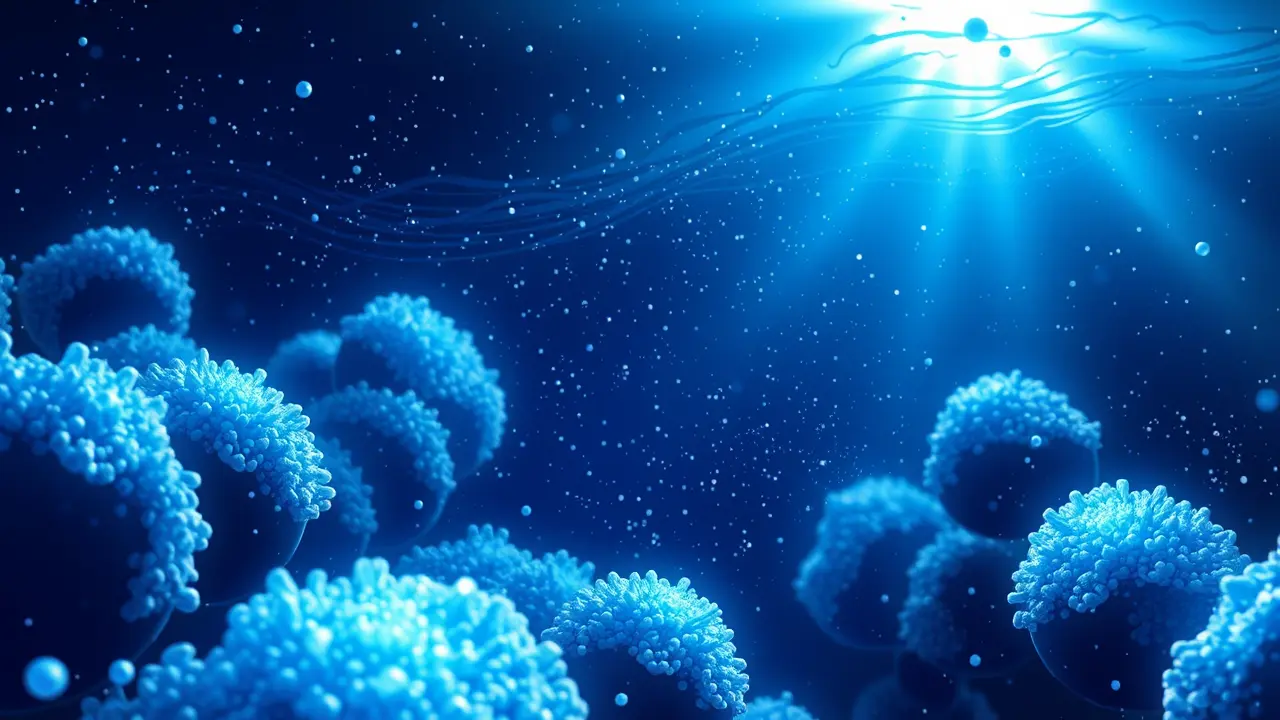They’re smaller than dust, but crucial for Earth’s climate
Beneath the sun-dappled surface of our vast oceans, a planetary drama of immense consequence is unfolding on a scale so minute it defies casual observation. The protagonists in this silent, ceaseless performance are the coccolithophores, microscopic plankton whose chalk-white, limestone scales have, for millions of years, been the unsung architects of Earth's very climate.To the untrained eye, they are mere specks, smaller than dust motes dancing in a sunbeam, yet their collective biological machinery is a fundamental force in the global carbon cycle, a natural thermostat that has helped regulate the planet's temperature through eons. These single-celled algae are master chemists, performing a dual role of profound importance: through photosynthesis, they capture atmospheric carbon dioxide and release life-sustaining oxygen, and in a parallel process of calcification, they construct their intricate, plate-like armors, known as coccoliths, effectively drawing dissolved carbon and calcium from the seawater to create solid calcium carbonate.When these organisms die, their minuscule, weighted skeletons sink in a continuous, ghostly rain to the abyssal plains, sequestering vast quantities of carbon in deep-sea sediments for geological timescales, creating the very chalk cliffs that define coastlines like Dover and leaving behind a layered, fossilized chronicle of past climate conditions that scientists now read like a history book. It is this monumental impact from the most diminutive of ocean dwellers that a coalition of European scientists is seeking to celebrate and elucidate with the establishment of International Coccolithophore Day on October 10th, a global collaboration that underscores the critical link between ocean chemistry, atmospheric regulation, and long-term carbon storage.This initiative is far more than a symbolic gesture; it is a crucial effort to raise public awareness that the health of our planet is inextricably tied to the vitality of its smallest inhabitants, whose populations are now facing unprecedented threats from ocean acidification—a direct consequence of humanity's relentless emission of CO2. As the ocean absorbs more of this greenhouse gas, its pH drops, making it increasingly difficult for these and other calcifying organisms to build their protective shells, potentially crippling one of Earth's most effective carbon sinks and creating a dangerous feedback loop that could accelerate climate change.The research being highlighted is groundbreaking, employing advanced satellite imagery that can detect the brilliant, milky-blue blooms of these organisms from space, allowing scientists to model their distribution and productivity on a global scale, while laboratory studies and oceanographic cruises probe their physiological responses to changing temperatures and acidity. The story of the coccolithophore is a humbling reminder of the complex, interconnected systems that sustain us, a narrative where the microscopic and the planetary are fused into one, and where the future of our climate may very well depend on our understanding and protection of these tiny, yet titanic, guardians of the deep.
It’s quiet here...Start the conversation by leaving the first comment.
© 2025 Outpoll Service LTD. All rights reserved.
